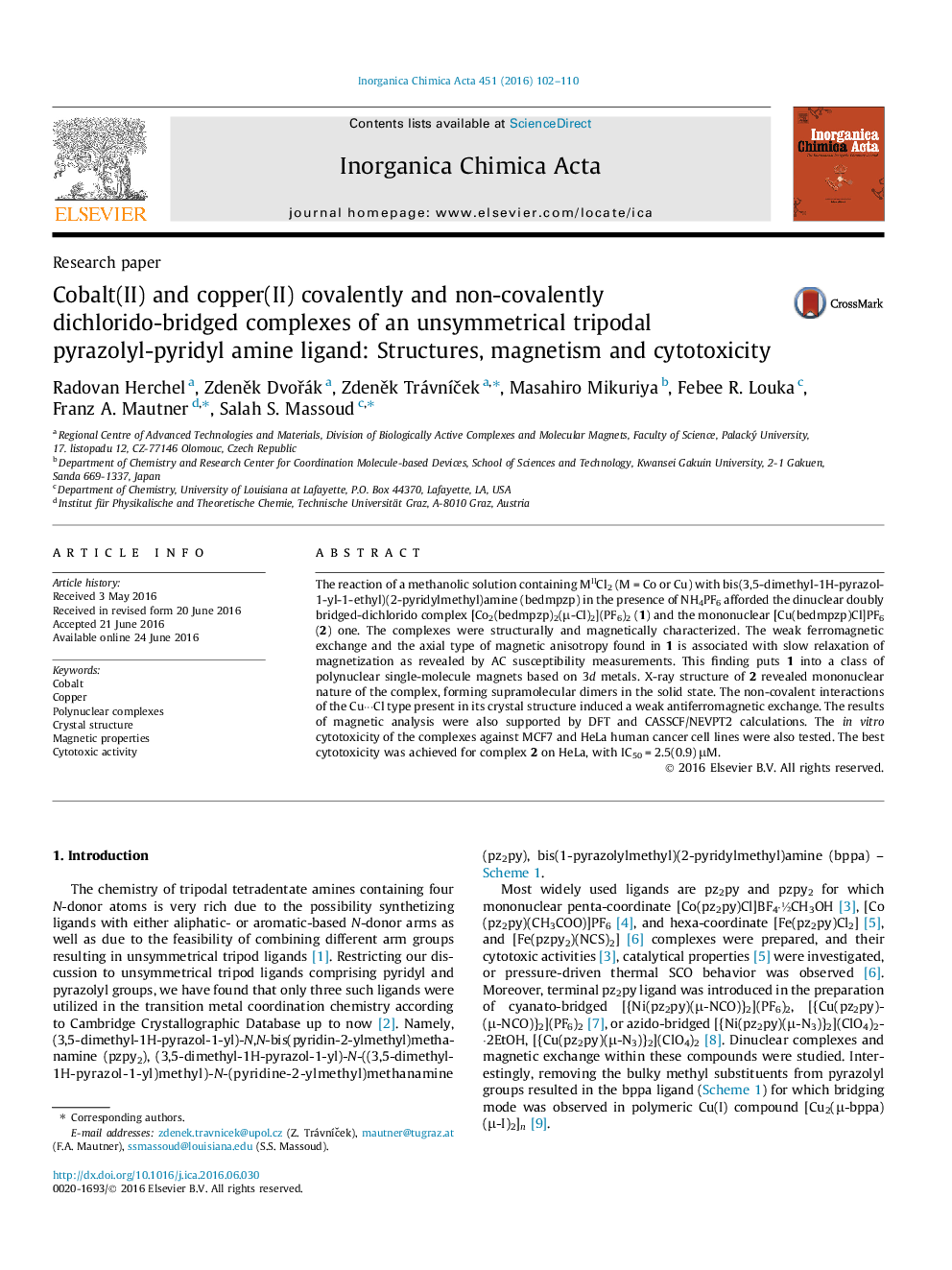| Article ID | Journal | Published Year | Pages | File Type |
|---|---|---|---|---|
| 1311930 | Inorganica Chimica Acta | 2016 | 9 Pages |
•Dinuclear Co(II) and mononuclear Cu(II) complexes were prepared using a tripodal ligand.•Bis(3,5-dimethyl-1H-pyrazol-1-yl-methyl)(2-pyridylmethyl)amine was utilized as the ligand.•Co(II) complex revealed weak ferromagnetic exchange, axial anisotropy and slow relaxation of magnetization.•The in vivo cytotoxicity against MCF7 and HeLa human cancer cell lines were also examined.
The reaction of a methanolic solution containing MIICl2 (M = Co or Cu) with bis(3,5-dimethyl-1H-pyrazol-1-yl-1-ethyl)(2-pyridylmethyl)amine (bedmpzp) in the presence of NH4PF6 afforded the dinuclear doubly bridged-dichlorido complex [Co2(bedmpzp)2(μ-Cl)2](PF6)2 (1) and the mononuclear [Cu(bedmpzp)Cl]PF6 (2) one. The complexes were structurally and magnetically characterized. The weak ferromagnetic exchange and the axial type of magnetic anisotropy found in 1 is associated with slow relaxation of magnetization as revealed by AC susceptibility measurements. This finding puts 1 into a class of polynuclear single-molecule magnets based on 3d metals. X-ray structure of 2 revealed mononuclear nature of the complex, forming supramolecular dimers in the solid state. The non-covalent interactions of the Cu⋅⋅⋅Cl type present in its crystal structure induced a weak antiferromagnetic exchange. The results of magnetic analysis were also supported by DFT and CASSCF/NEVPT2 calculations. The in vitro cytotoxicity of the complexes against MCF7 and HeLa human cancer cell lines were also tested. The best cytotoxicity was achieved for complex 2 on HeLa, with IC50 = 2.5(0.9) μM.
Graphical abstractThe dinuclear doubly bridged-dichlorido complex [Co2(bedmpzp)2(μ-Cl)2](PF6)2 (1) and the mononuclear [Cu(bedmpzp)Cl]PF6 (2) were structurally and magnetically characterized. Complex 1 revealed weak ferromagnetic exchange with slow relaxation of magnetization, whereas 2 showed weak antiferromagnetic exchange. The in vitro cytotoxicity of the complexes against MCF7 and HeLa human cancer cell lines were also tested.Figure optionsDownload full-size imageDownload as PowerPoint slide
